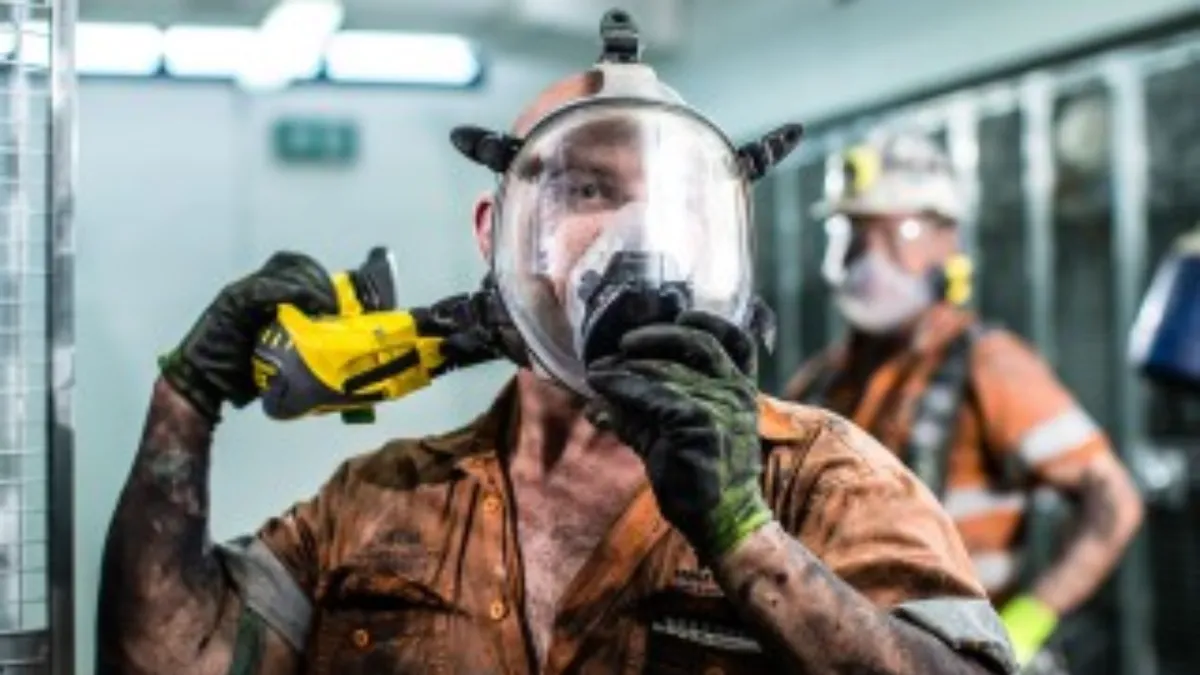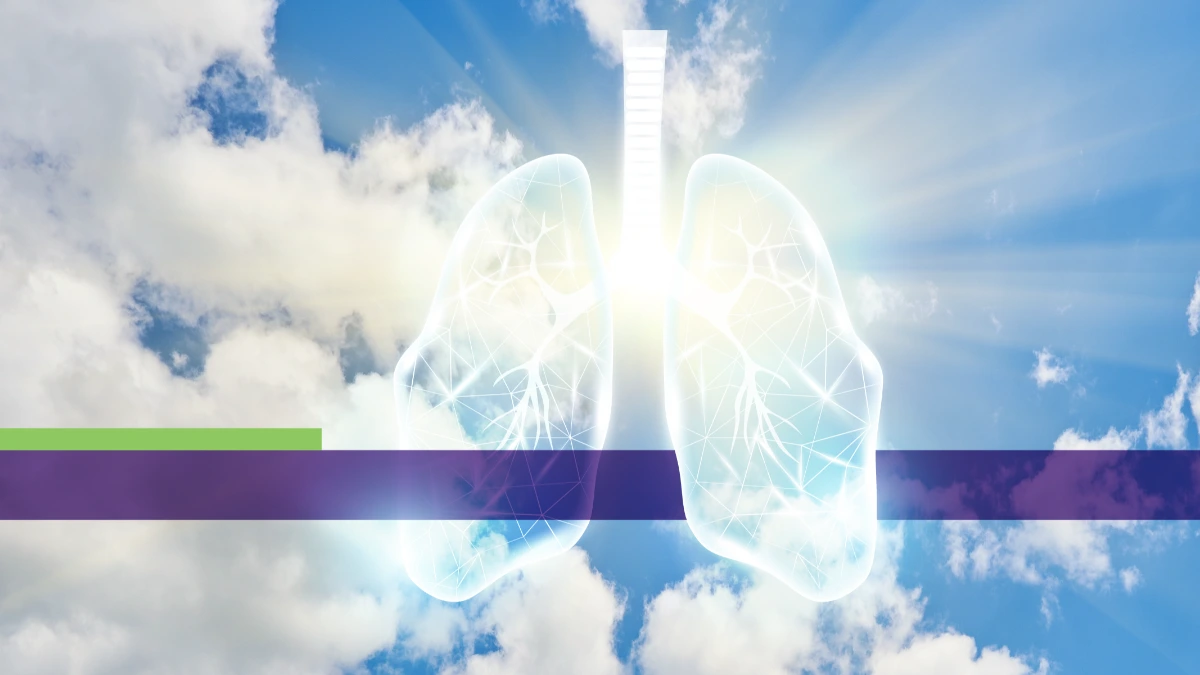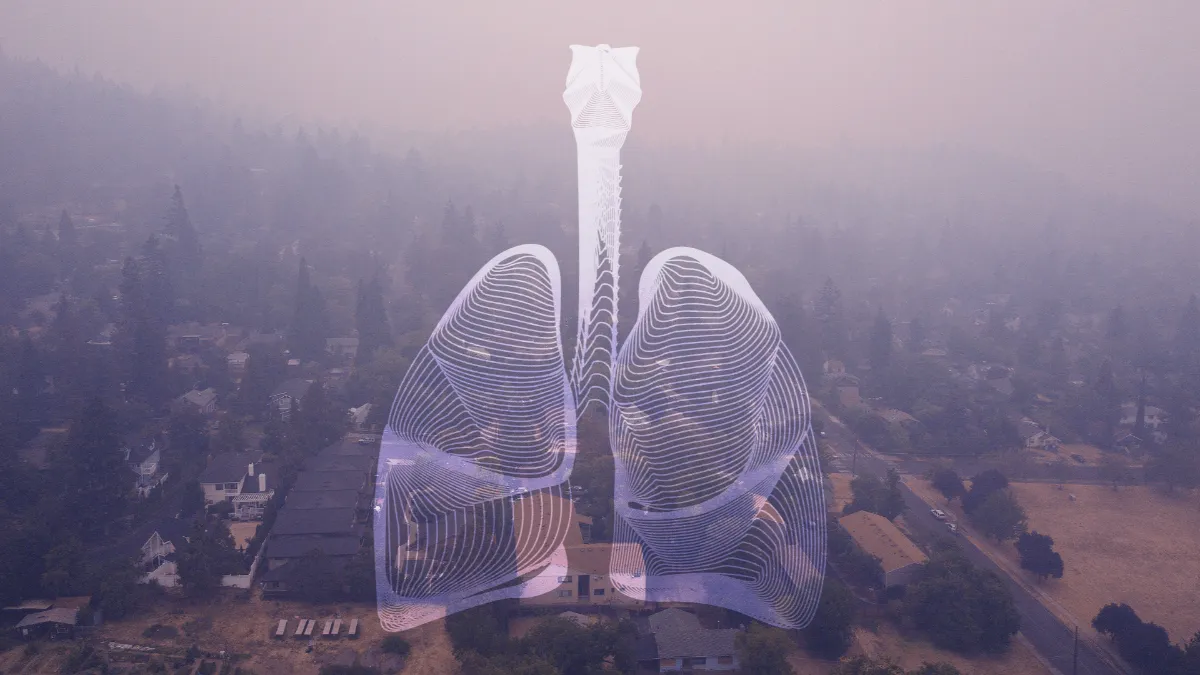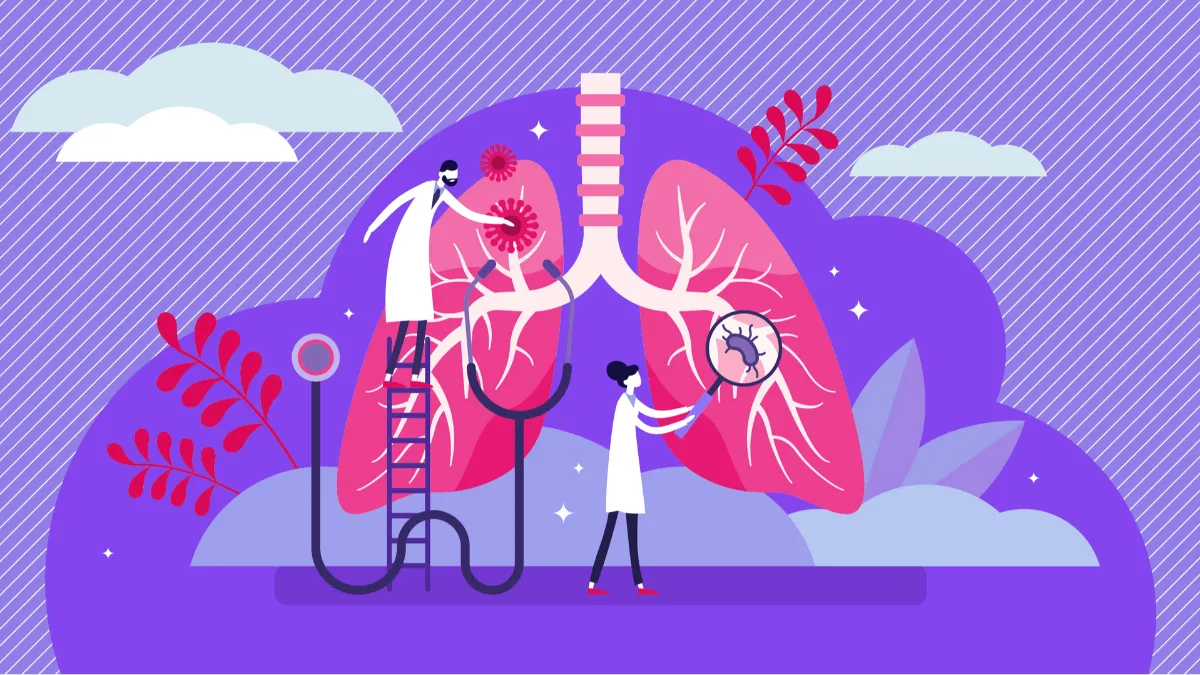How have the recent global wildfires impacted respiratory health?
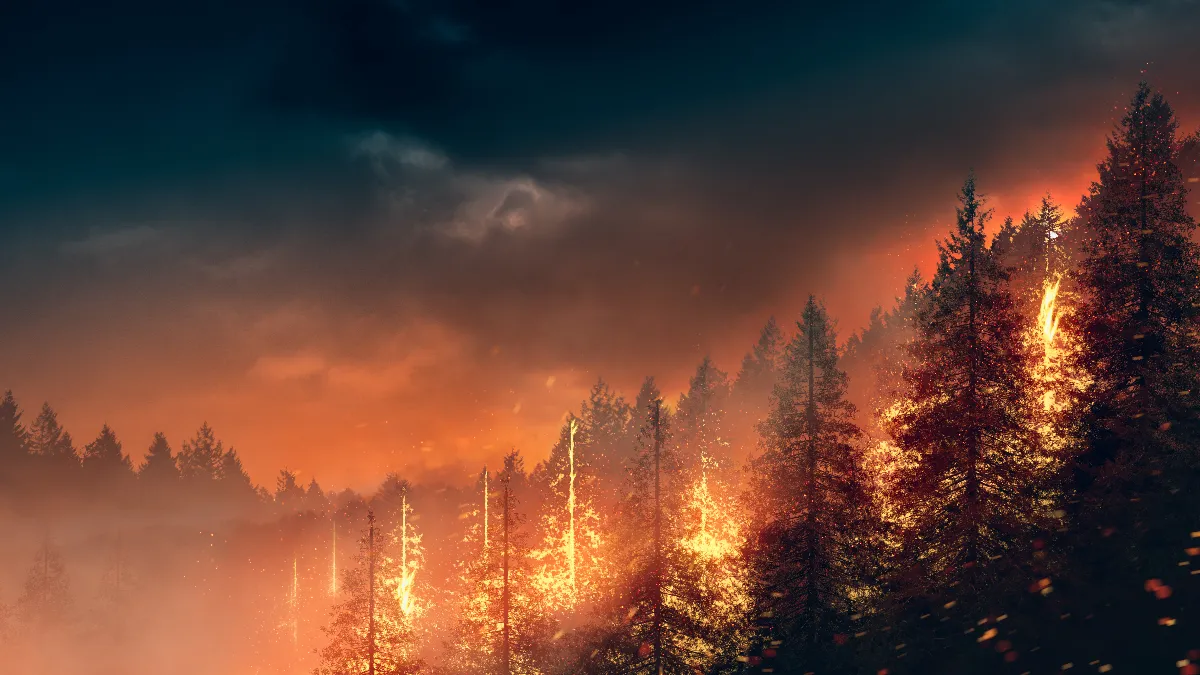
Back in the halcyon days of January 2020, it seemed perhaps the biggest story of the year would have to do with wildfires. Australia was in the midst of what has since become known as the “Black Summer,” a bushfire season considered among the worst of all time.
The physical and economic tolls the fires took were horrific, with an estimated 186,000 square kilometers destroyed and over 100 billion Australian dollars removed from the economy1.2
Of course, those costs pale in comparison to the human cost. The fires killed at least 30 people directly, but a report this summer linked almost 15 times as many fatalities to the blazes thanks to the secondary effects of the resultant air pollution.3
What are the common forms of air pollution? #
Most people associate ‘air pollution’ with stereotypical sources:
- Smog from automobile tailpipes and airplanes
- Industrial smokestacks, such as power plants and sewage treatment works’
- Livestock farming and the extraction of oil and gas
These sources certainly produce a great deal of particulate matter and fumes that most frequently contaminate the air we breathe, but they are far from being the only sources.
Wildfires emit a wide variety of substances that have a tremendous impact on respiratory health, both in people with chronic respiratory conditions and those with healthy lungs. Before the impact of wildfire smoke can be properly evaluated, the components of smoke (and their effects on respiratory physiology) must be understood.
How does air pollution affect respiratory health? #
Air pollution generated by combustion is made up of several thousand discrete elements and compounds, and the exact composition varies by the material being burned.4 Even different species of trees and plants can produce different amounts and compositions of smoke and fumes. However, the contents of the smoke plume can be grouped into three general categories:
- Particulate matter (PM), is the most visible component and is what most people think of as ‘smoke’. These particles can be in either solid or liquid state and can be further broken down by size into coarse (between 2.5 & 10 microns in diameter), fine (between 0.1 & 2.5 microns), and ultrafine (less than 0.1 microns). Each category has distinct health risks, some of which are only recently coming into focus.
- Volatile compounds, which include complex hydrocarbon molecules like benzene and formaldehyde. Many of these compounds are carcinogenic to a certain degree, and all have the potential to irritate the respiratory tract.
- Finally, smoke contains varying amounts of toxic gases, such as carbon monoxide and hydrogen cyanide.
How does particulate matter affect the lungs? #
Much like aerosol medications, the specific part of the respiratory tract affected by PM depends on the size of the particle. The largest ones, PM10, generally have the least long-term physiological risk. They directly affect the mucus membranes, which usually means increased coughing, tearing up, nasal congestion, and similar symptoms.5 These effects are certainly of concern to those people who are already at risk for respiratory issues, such as those with asthma or COPD, but the vast majority of these particles fall more under the category of a nuisance than a real threat.
Can particulate matter be dangerous to health? #
Far more dangerous is the PM2.5 class. These particles are more consistent with the aerosols generated by most nebulizers, which are obviously designed to create respirable particles. Most of these devices create a mist with a mass median aerodynamic diameter between 3-5 microns,6 so PM2.5 is arguably even easier to inhale into the small airways. That means these particles can have a tremendous impact on morbidity and mortality, even in people without pre-existing respiratory conditions.
Indeed, the Forum of International Respiratory Societies (FIRS) identifies PM2.5 as accounting for over 4 million deaths and 103 million disability-adjusted life years (DALYs) lost every year.5 The size of these particles means they can easily irritate and inflame the small airways, and they have even been known to erode alveolar walls.7
Obviously, this significantly increases the risk of a variety of respiratory conditions and exacerbates the symptom burden of those who already have respiratory challenges. A longitudinal study from the American Cancer Society of nearly 190,000 never-smokers found that for every increase of 10 microns per cubic meter in PM2.5 density, the risk of lung cancer increased by up to 27%, with the highest risk in those with a respiratory disease of another etiology.8 These particles also trigger immune responses, enhance the production of inflammatory cytokines, and can even inhibit cilia function, resulting in a high risk of infection.7 They can even lead to the development of fibrotic tissue and other interstitial lung problems.5
Can smoke inhalation affect organs other than the lungs? #
The smallest particles, the PM0.1 class, have the capability of affecting organs far beyond the lungs. At this size, particles can pass through the alveolar membrane and enter the bloodstream, potentially having an effect on any organ system.5 Unfortunately, research into these so-called “nanoparticles” is still in its relative infancy, and there is still much to learn about how prevalent they are in smoke and other forms of air pollution, how they disperse through the body, and their exact effects on different organs. Preliminary studies have pointed to effects as varied as disruptions in the blood clotting process to potential carcinogenesis. Worse, it is thought these particles can linger in the body for years, steadily accumulating throughout various systems with unknown effects.9
What are volatile compounds? #
These compounds are literally an invisible component to wildfire smoke, and their health risks are thus sometimes underestimated, particularly when considering outdoor air quality. These compounds include both the common (such as the naphthalene in mothballs or the aforementioned formaldehyde) and the exotic (such as benzo(b)fluoranthene), with varying impacts on human health.
The greatest risk from these molecules is the development of various cancers of not only the lungs and skin (where one would expect due to direct exposure), but internal organs such as the bladder and pancreas.10 When it comes to wildfires, the risk of these cancers has historically been fairly low outside of occupational risks (such as firefighters, who were shown to have triple the risk of lung cancers over their lifetimes11), but as the planet enters a phase of frequent mega-fires, it is unclear whether prolonged exposures in certain regions prone to fires may see an increase in such cancers.
Respiratory health impacts of volatile compounds #
Perhaps more concerning are the secondary effects that these compounds have, as they have a tendency to combine with nitrogen oxide compounds (also given off by combustion) to create ozone. Ozone is again a well-known respiratory irritant, causing bronchospasm and increasing inflammation in virtually every population. It has also been implicated in not just worsening, but actually causing both COPD and asthma, as well as increasing the risk of respiratory infections.12
Most frequently, the volatile compounds that cause ground-level ozone are generated by things like lawnmower engines and the like, but wildfires have been associated with regional increases in ozone levels during years of high fire prevalence.13 The effect is not necessarily confined to a small geographic region, either; in August 2020, Denver, Colorado experienced several days of ozone levels well above the federal limit, with local authorities attributing the surge to wildfires not only elsewhere in Colorado, but as far away as California.14
What are toxic gases and does exposure impact respiratory health? #
No discussion of pollution would be complete without mention of the other gases given off by combustion, particularly carbon monoxide and dioxide. These compounds aren’t necessarily volatile, and they can’t fairly be described as particles, but they have a significant effect on health, nonetheless. In general, these gases pose less of a concern for those with healthy lungs, as they usually do not spread very far in sufficient concentration to cause a major effect.
However, for those with a respiratory problem who are near the front lines of a fire, these gases can be a significant issue. Carbon monoxide, in particular, can cause increases in blood pressure due to the disruption of hemoglobin’s oxygen-carrying capacity, which in turn can lead to chest pain and arrhythmias.15 Carbon monoxide can also climb well into the atmosphere and travel vast distances before being forced down again, potentially causing issues for people very distant from the fire’s origin.16 Carbon monoxide from 2020’s California wildfires has been tracked by NASA to as far away as the Great Lakes region.17
Do wildfires pose increased effects on lung health? #
Much like its more volatile cousins, carbon dioxide’s main effect in the context of wildfires is secondary: The release of massive amounts of CO2 from fires into the atmosphere has an effect on climate, making additional fires (with resultant pollution) more likely. Historically this may not have been a major issue, as people were exposed to a catastrophic fire once or twice during the course of their lives, according to atmospheric scientists, these exposures are becoming more prevalent with unknown cumulative health risks.18 As individual fires grow larger, they will emit more carbon dioxide (these California fires have increased the state’s carbon dioxide emissions to more than 125% of the annual normal),19 potentially generating previously unrecognized health risks.
Clearly, even the existing health risks of wildfire-related air pollution are significant, and we’ve barely scratched the surface of anything outside the pulmonary system. Yet, as the Colorado ozone data (as well as similar NASA data that show smoke from Siberian wildfires affecting the US Pacific coast) tell us, air quality can be affected by factors and events well outside local control. Many clinicians then wonder at minimum how the chronic respiratory community can be protected and how public health advocates can protect the general population.
How can we mitigate the risks of wildfire smoke? #
Fortunately, through the AirNow program, the US Environmental Protection Agency has developed a guide to help medical professionals advise the people in their care how to best protect their lungs. The advice ranges from the fairly simple (“stay indoors”) to preparation recommendations and infrastructure and HVAC considerations for specific populations.15 Importantly, the guide also serves as a reminder that indoor air quality can be just as important as the air outside and that people should not necessarily take their air quality for granted, especially if the indoors is to be their only safe haven. The wildfire smoke guide is free alongside a helpful online video.
Can wildfire smoke affect those with healthy lung function? #
It may be tempting to dismiss wildfire smoke as a transient event that happens somewhere else. This may have even been true for a very long time. However, one of the indelible images of the 2020 Australian Open, the first major tennis tournament of the year, was a competitor falling to their knees during a coughing fit that eventually caused the cancellation of their match. Several others required medical delays, and the safety of the tournament itself was debated for some time.20
These athletes are in peak physical condition, used to the grueling cardiovascular demands of their sport, and yet they still had difficulty breathing. With changing weather patterns and the growing threat of repeated, large-scale wildfires, clinicians should recognize that the impact of wildfire smoke can be felt virtually anywhere by virtually anyone. Preparation is key, particularly when it comes to protecting the pulmonary function of those already diagnosed with a lung issue. Accurate diagnosis of lung function, optimized therapy regimens, and patient-centered communication can help entire communities continue to breathe easily, even when wildfires loom.
References #
1. “It was a line of fire coming at us”: South West firefighters return home | Busselton-Dunsborough Mail | Busselton, WA. https://www.busseltonmail.com.au/story/6620313/it-was-a-line-of-fire-coming-at-us-firefighters-return-home/. Accessed November 8, 2020.
2. With costs approaching $100 billion, the fires are Australia’s costliest natural disaster. https://theconversation.com/with-costs-approaching-100-billion-the-fires-are-australias-costliest-natural-disaster-129433. Accessed November 8, 2020.
3. Australia bushfires: Hundreds of deaths linked to smoke, inquiry hears - BBC News. https://www.bbc.com/news/world-australia-52804348. Accessed November 8, 2020.
4. Ammann, H, Robert Blaisedell, Michael Lipsett, U.S. Environmental Agency, Shannon Therriault, California Office of Environmental Health Hazard Assessment SLS. Wildfire Smoke: A Guide for Public Health Officials.; 2001.
5. Schraufnagel DE, Balmes JR, Cowl CT, et al. Air Pollution and Noncommunicable Diseases: A Review by the Forum of International Respiratory Societies’ Environmental Committee, Part 1: The Damaging Effects of Air Pollution. Chest. 2019;155(2):409-416. doi:10.1016/j.chest.2018.10.042
6. Adorni G, Seifert G, Buttini F, et al. Aerosolization performance of jet nebulizers and biopharmaceutical aspects. Pharmaceutics. 2019;11(8). doi:10.3390/pharmaceutics11080406
7. Xing YF, Xu YH, Shi MH, Lian YX. The impact of PM2.5 on the human respiratory system. J Thorac Dis. 2016;8(1):E69-E74. doi:10.3978/j.issn.2072-1439.2016.01.19
8. Turner MC, Krewski D, Pope CA, Chen Y, Gapstur SM, Thun MJ. Long-term ambient fine particulate matter air pollution and lung cancer in a large cohort of never-smokers. Am J Respir Crit Care Med. 2011;184(12):1374-1381. doi:10.1164/rccm.201106-1011OC
9. Bakand S, Hayes A. Toxicological considerations, toxicity assessment, and risk management of inhaled nanoparticles. Int J Mol Sci. 2016;17(6):929. doi:10.3390/ijms17060929
10. Boström CE, Gerde P, Hanberg A, et al. Cancer risk assessment, indicators, and guidelines for polycyclic aromatic hydrocarbons in the ambient air. Environ Health Perspect. 2002;110(SUPPL. 3):451-488. doi:10.1289/ehp.110-1241197
11. Stottrup Hansen E. A cohort study on the mortality of firefighters. Br J Ind Med. 1990;47(12):805-809. doi:10.1136/oem.47.12.805
12. Health Effects of Ozone Pollution | Ground-level Ozone Pollution | US EPA. https://www.epa.gov/ground-level-ozone-pollution/health-effects-ozone-pollution. Accessed November 9, 2020.
13. Jaffe DA, Wigder N, Downey N, Pfister G, Boynard A, Reid SB. Impact of wildfires on ozone exceptional events in the western U.S. Environ Sci Technol. 2013;47(19):11065-11072. doi:10.1021/es402164f
14. Health-harming ozone spikes as wildfire haze, record heat hang over Denver. https://www.denverpost.com/2020/08/25/colorado-wildfire-smoke-pollution-ozone/. Accessed November 9, 2020.
15. Stone, SL. WILDFIRE SMOKE: A GUIDE FOR PUBLIC HEALTH OFFICIALS.
16. Carbon monoxide from California wildfires drifts east – Climate Change: Vital Signs of the Planet. https://climate.nasa.gov/news/2781/carbon-monoxide-from-california-wildfires-drifts-east/. Accessed November 9, 2020.
17. NASA Monitors Carbon Monoxide From California Wildfires | NASA. https://www.nasa.gov/feature/jpl/nasa-monitors-carbon-monoxide-from-california-wildfires. Accessed November 9, 2020.
18. How breathing in wildfire smoke affects the body. https://www.nationalgeographic.com/science/2020/09/how-breathing-wildfire-smoke-affects-the-body/. Accessed November 9, 2020.
19. ‘Off the chart’: CO2 from California fires dwarf state’s fossil fuel emissions. https://news.mongabay.com/2020/09/off-the-chart-co2-from-california-fires-dwarf-states-fossil-fuel-emissions/. Accessed November 9, 2020.
20. Smoke plays havoc as Australian Open qualifier suffers coughing fit | Sport | The Guardian. https://www.theguardian.com/sport/2020/jan/14/safety-first-as-australian-open-qualifying-delayed-due-to-poor-air-quality. Accessed November 9, 2020.


